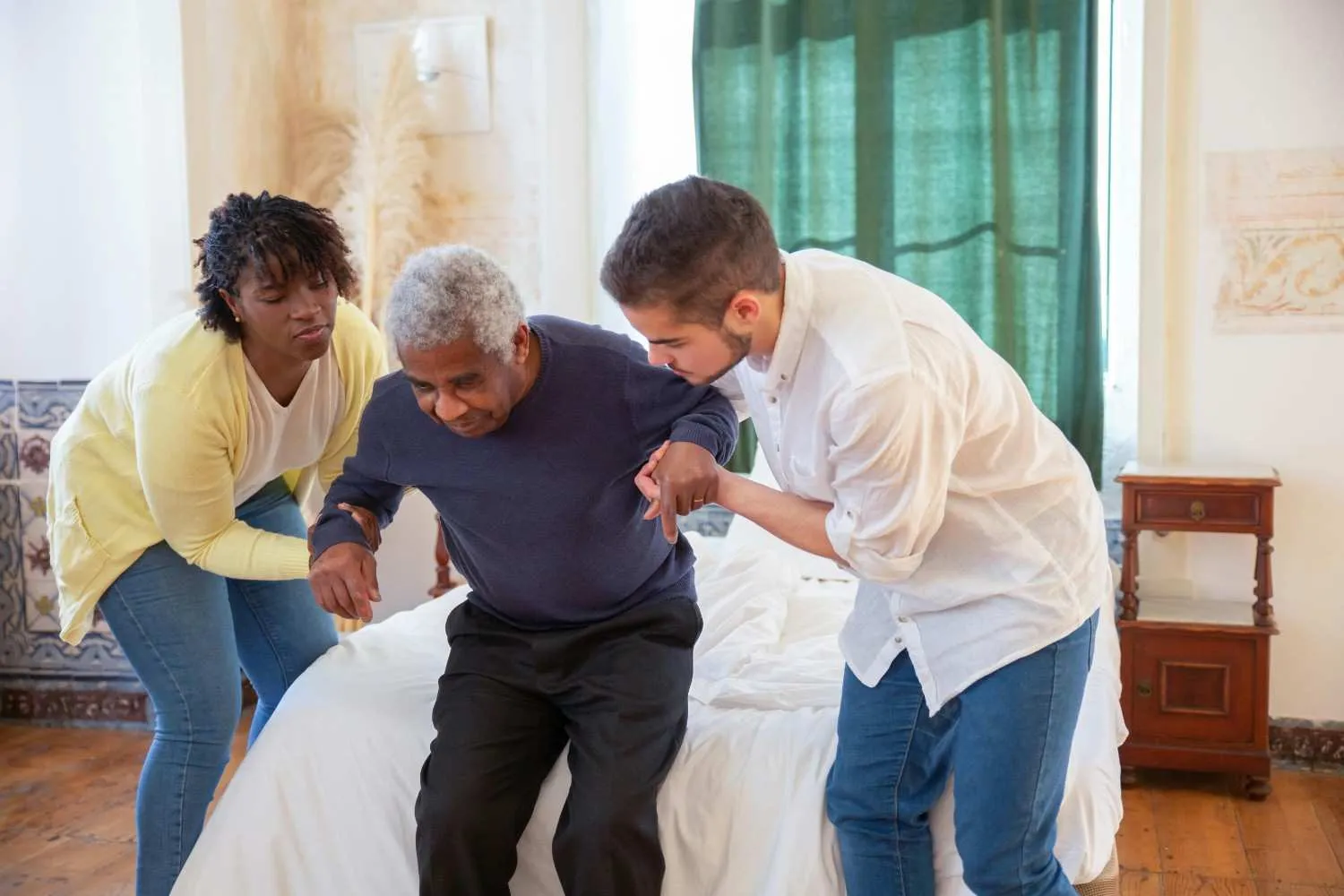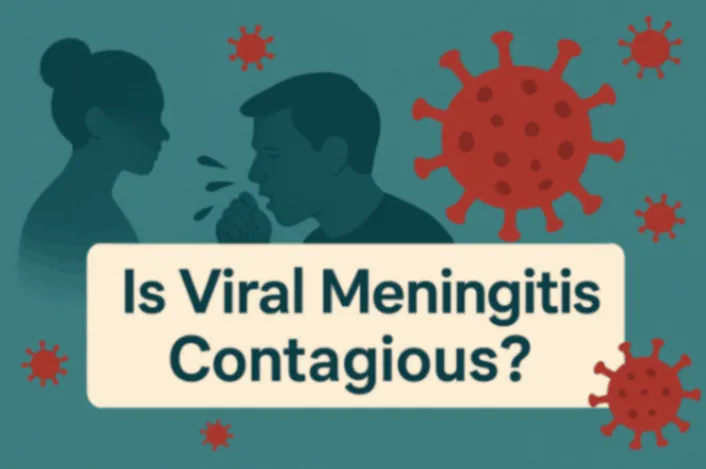Seizures are widespread in the United States among different age groups and races. Millions of people have them at some point in their life. Brain injury or trauma, psychiatric conditions, stress, and certain chronic health issues can be the potential causes. Several treatment options are available to manage the severity and frequency of the symptoms of seizures. But, how can you recognize the warning signs of a seizure?
This article will help you understand the early and late warning signs of a seizure in adults and children. We will also discuss its causes, diagnosis, and treatment options. Read on!
10 Warning Signs of Seizure in Adults
Approximately 10% of the adult population in the U.S. have seizures in their lifetime. Among them, nearly 1% are diagnosed with active epilepsy, a condition marked by recurrent seizures. The symptoms of seizures in adults can vary based on the seizure types such as generalized or focal seizures. The following are the warning signs of a seizure in adults:
-
Staring: A person might start staring at distant places or have an absent mind.
-
Loss of consciousness: People might also lose their sense of awareness or alertness.
-
Jerk movements: They might feel uncontrollable jerks or shaking of their legs and arms.
-
Stiffness: Sometimes, a seizure may result in stiffness of the body.
-
Breathing problems: An individual might also feel difficulty breathing or even stop breathing.
-
Confusion: Some people might feel totally confused or experience a "brain fog".
-
Mood changes: Seizures can also lead to sudden anger, laughter, fear, joy, and panic.
-
Unusual sensations: They might feel a "rising" feeling in the stomach, a tingling sensation in arms and legs, or unfamiliar tastes or smells.
-
Vision changes: The seizure patient might also see dark circles, colorful stains, or sparkling lights.
-
Hearing changes: People might hear noises that are not audible to others. Those include whistling, ringing, and buzzing.
8 Warning Signs of a Seizure in a Child
Seizures as well as epilepsy are more common in young children. Approximately 4-5% of children are diagnosed with such conditions in their childhood. Epilepsy might develop because of neurodevelopmental conditions that are genetics. To avoid any further complications, understand the potential warning signs of a seizure in a child:
-
Head nodding: Children might rhythmically nod their heads.
-
Staring: Children may seem like staring or daydreaming. They might not show any reaction to noises or words for a short period.
-
Jerking: They might jerk both legs up towards their stomach or their whole upper body might shake.
-
Loss of consciousness: Children might lose a sense of consciousness or alertness.
-
Stiffening: The legs or arms of the body might become stiff.
-
Falling: They might fall suddenly without any clear reasons.
-
Headaches: Some children may feel a sharp, radiating, or steady headache before experiencing a seizure. This type is known as a pre-ictal headache.
-
Color change: The color of the face and lips might change.
Are There Early Warning Signs of a Seizure?
Some people do not experience any warning signs that could indicate the occurrence of a seizure. While others do experience the symptoms just before or during the initial period of a seizure. These symptoms are divided according to prodrome and aura phases.
Prodrome Phase: Before the Seizure
According to one clinical trial, around 21.9% of epilepsy patients experience symptoms a few days, hours, or minutes before the beginning of a seizure. Those potential early warning symptoms are:
-
Headaches
-
Numbness or tingling
-
Trouble sleeping
-
Nausea
-
Lightheadedness
-
Mood swings
-
Dizziness
-
Mood/behavioral changes
-
Increased irritability and agitation
-
Trouble focusing
Aura Phase: Beginning of a Seizure
People with seizures might experience certain symptoms a few seconds or minutes before the beginning of the actual seizure: The possible symptoms include:
-
Deja vu, a feeling that you had experienced something before
-
Visual changes such as wavy lines, flashing lights, or spots
-
Hearing abnormalities
-
Changes in smell, taste, and sensations
-
Tingling sensations in certain body parts
-
Weakness and falling
-
Jerky movements in legs, arms, or whole body
-
Feelings of fear, intense happiness, or panic
What Causes Seizures?
Generally, the actual cause of the seizures is the sudden changes in the brain's electrical activity. The factors responsible for causing such abnormal electrical activity are:
-
abnormal electrolyte balance
-
Brain injury or infections
-
high fever
-
withdrawal from alcohol or drugs
-
concussion
-
certain medications
-
sleep deprivation
-
genetic changes
-
high or low blood sugar levels
-
health conditions such as heart disorders or cancer
-
psychiatric conditions
Moreover, seizures are also categorized according to the reason for their happening:
-
Nonepileptic seizures: These are called nonepileptic because they do not occur due to abnormal brain activity. Instead, they happen because of underlying health issues such as diabetes, heart disease, or emotional pain. The warning signs of a non-epileptic seizure include loss of alertness, seizure-like attack, confusion, loss of bladder control, or change in senses.
-
Epileptic seizures: These types of seizures happen randomly due to abnormal brain activity. The factors that trigger such conditions include brain injury, low or high blood sugar levels, genetics, or even high fever. They can be the primary signs of epilepsy. The symptoms include jerk movements, loss of awareness, shaking, breathing problems, and more.
Some seizures are idiopathic. This means they occur without any apparent cause or risk factors.
After-effects of a Seizure
After the seizure, people might experience certain after-effects that last for some minutes or hours:
-
Unconsciousness
-
Confusion
-
Fatigue
-
Physical soreness
-
Memory loss
-
Headache
-
Muscle pain
-
Weakness
-
Loss of bowel or bladder control
These effects can help the doctor understand and determine the origin of the seizure in a specific brain area.
What to Do During and After a Seizure?
If you or someone around you experience any symptoms of a seizure, do not panic. Give me some time. Know in detail what you can do:
During and after your seizure
-
Keep calm and make sure to get yourself in a safe place
-
Inform the people around you
-
Place some soft things under your head
-
Lose the tight clothes if any
-
Take prescribed medications
-
After feeling good, record when and how long the seizure lasts. In addition, note which activity you were involved in when the seizure attack started.
-
Share all these things with the doctors to determine preventive measures.
During and after a seizure in others
-
Make a person lie on their side to let the vomit and saliva come out.
-
Offer them comfort
-
Do not put anything in their mouth
-
Check whether a person is breathing properly
-
Record the timing when the seizure starts and lasts
-
Make the person sit safely once the seizure is over.
-
Also, ask them about their other medical conditions, and if they can talk
-
Get them home safely.
How Long Do Seizures Last? When to Call 911
Not all seizure cases need emergency help. Typically, most seizures last for 30 seconds to 2 minutes. However, in some circumstances where a person has never had one, they might be required to visit the hospital immediately. According to the CDC, see a doctor or call 911 in case the seizure attack continues for 5 minutes or more or a person remains unconscious. In addition, seek medical help as soon as possible if you are:
-
injured
-
on water
-
pregnant
-
struggling with other health issues
-
finding difficulty in breathing or waking up
-
experiencing a seizure for the first time
-
having a seizure attack immediately after the first
How is a Seizure Diagnosed?
Neurologists will initially perform a physical exam and a neurological exam. During the physical exam, doctors will check your symptoms and learn about your medical and family history. In addition, a neurological exam will help evaluate the conditions, affecting the brain, spinal cord, and nerves. Moreover, doctors will conduct some diagnostic tests to determine whether you have seizures. Those tests include:
-
Blood tests.
-
Computed tomography (CT) scan
-
Electroencephalogram (EEG)
-
Genetic tests
-
Magnetic resonance imaging (MRI)
-
Positron emission tomography (PET) scan
-
Spinal tap (lumbar puncture)
The doctors will tell you what diagnostic tests they suggest and why.
Management and Treatment
The treatment will differ due to the type, cause, and severity of the seizure. The doctors may manage and treat the condition in the following way:
-
Underlying conditions management: Initially, doctors will manage the underlying health issues that might trigger seizures in the future. Those conditions include low blood sugar levels or stroke.
-
Anti-seizure medications: These medications may help prevent current and future seizures. In addition, they also reduce the frequency and severity of the condition.
-
Surgery: It might be helpful in the treatment of focal seizures that occur in a particular brain part. Corpus callosotomy is another surgical procedure that can help with atonic seizures.
-
Brain stimulation: This involves the implantation of a device (called a responsive nerve stimulator) in the brain to deliver electrical current. This device controls seizures by blocking the brain's abnormal electrical activity.
In certain cases where these treatment options fail, doctors suggest dietary changes. A ketogenic diet also known as a low-carb diet can help reduce the frequency of seizures. This diet is low in carbs and high in fats that can manage recurrent seizures. However, more research is still going on to know about the efficacy of diet for seizure management.
How to Prevent Seizures?
You can consider the following measures to prevent seizures:
-
Discuss your prescription medications that might worsen your seizure symptoms with the providers.
-
Use seizure medications as prescribed by
-
Avoid triggers like smoking, illegal drugs, and alcohol.
-
Get enough sleep for 8 hours each day.
-
Manage your stress by practicing meditation or yoga
-
Reduce stroke risk by controlling your diabetes, high blood pressure, and also excess body weight.
-
Lower the body temperature of the child if they have a fever to prevent febrile seizures.
Final Thoughts
Seizures can occur suddenly, leading to risks such as falls, car accidents, drowning, mental health issues, and even complications during pregnancy. Therefore, understanding the warning signs of a seizure is crucial, as it allows extra time to seek help. If you or those around you recognize the warning signs of a seizure, you can assist them using the tips mentioned earlier in the article. In cases where the seizure lasts for more than 5 minutes, seek medical guidance immediately. Healthcare providers can help manage and treat the condition with effective treatments.
Frequently Asked Questions
What is the first indicator of a seizure?
The aura phase is the first indicator with symptoms such as headache, vision changes, anxiety, rising feeling in the belly, and also changes in senses.
Can drinking water prevent seizures?
Yes, drinking a lot of water can reduce the risk of seizures. Dehydration is one of the common triggers of seizures, particularly during exercise.
What are fake seizures called?
They can be called psychogenic nonepileptic seizures (PNES) which are often misdiagnosed as epilepsy.
Can Benadryl stop seizures?
No, it can increase the risk of seizure or worsen the seizure symptoms in epilepsy patients.
Do you urinate when you have a seizure?
Yes, atonic seizures can lead to bladder muscle relaxation, allowing frequent urine flow.
Reviewed by







